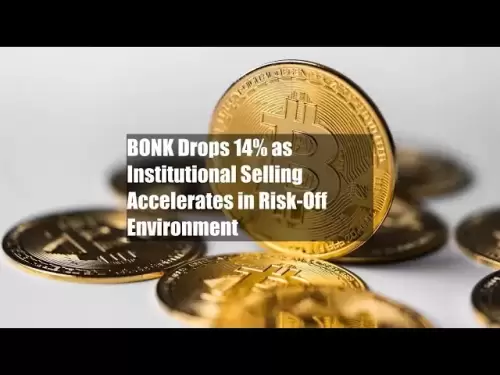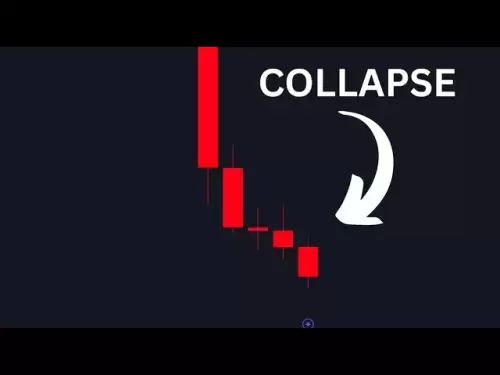-
 Bitcoin
Bitcoin $113900
-1.39% -
 Ethereum
Ethereum $3517
-4.15% -
 XRP
XRP $3.009
1.59% -
 Tether USDt
Tether USDt $0.9997
-0.04% -
 BNB
BNB $766.8
-1.41% -
 Solana
Solana $164.6
-2.38% -
 USDC
USDC $0.9998
-0.02% -
 TRON
TRON $0.3277
0.65% -
 Dogecoin
Dogecoin $0.2023
-1.67% -
 Cardano
Cardano $0.7246
0.05% -
 Hyperliquid
Hyperliquid $38.27
-4.77% -
 Sui
Sui $3.528
-0.52% -
 Stellar
Stellar $0.3890
-0.73% -
 Chainlink
Chainlink $16.16
-2.69% -
 Bitcoin Cash
Bitcoin Cash $539.9
-4.38% -
 Hedera
Hedera $0.2425
-2.00% -
 Avalanche
Avalanche $21.71
-0.97% -
 Toncoin
Toncoin $3.662
5.73% -
 Ethena USDe
Ethena USDe $1.000
-0.02% -
 UNUS SED LEO
UNUS SED LEO $8.964
0.35% -
 Litecoin
Litecoin $107.7
2.33% -
 Shiba Inu
Shiba Inu $0.00001223
-0.40% -
 Polkadot
Polkadot $3.617
-0.97% -
 Uniswap
Uniswap $9.052
-2.49% -
 Monero
Monero $295.1
-3.79% -
 Dai
Dai $0.9999
0.00% -
 Bitget Token
Bitget Token $4.315
-1.85% -
 Pepe
Pepe $0.00001060
0.11% -
 Cronos
Cronos $0.1342
-2.72% -
 Aave
Aave $256.0
-0.87%
How long do trading halts for Bitcoin ETFs usually last?
Trading halts for Bitcoin ETFs can last from minutes to hours, triggered by volatility, order imbalances, regulatory actions, or news events, with no fixed duration.
Mar 31, 2025 at 11:35 am
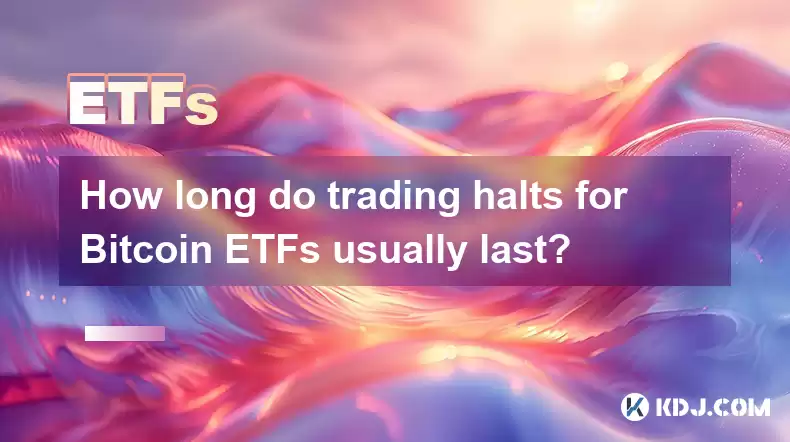
Understanding Trading Halts in Bitcoin ETFs
Trading halts are temporary suspensions of trading in a particular security, in this case, a Bitcoin ETF (Exchange-Traded Fund). These halts are implemented by exchanges to maintain market order and prevent price manipulation or extreme volatility. The duration of a halt is not fixed and depends on several factors, including the severity of the event triggering the halt and the exchange's specific rules. There's no standard "usual" duration.
Factors Influencing the Length of a Halt
Several factors contribute to the length of a trading halt for a Bitcoin ETF. Market Volatility: A significant and sudden price swing is a primary reason for a halt. The more dramatic the movement, the longer the halt might last, as the exchange needs time to assess the situation and ensure fair trading resumes. Order Imbalance: A large disparity between buy and sell orders can also trigger a halt, preventing a potential cascade of price changes. Exchanges need to resolve this imbalance before reopening trading.
Regulatory Interventions: Regulatory actions or announcements concerning Bitcoin or the ETF itself can lead to halts. These halts allow the market to absorb the news and adjust to any changes in regulations or policies. Technical Issues: While less common, technical glitches on the exchange platform can necessitate a temporary halt to ensure the smooth and accurate functioning of the trading system. These issues need to be resolved before trading resumes.
News Events: Major news impacting the cryptocurrency market, such as significant regulatory changes, hacks, or announcements from major players, can trigger trading halts. These pauses allow the market to process the information and prevent rash trading decisions based on incomplete or inaccurate information.
Exchange-Specific Rules and Procedures
Each exchange has its own set of rules and procedures governing trading halts. These rules outline the specific conditions that trigger a halt, the process for implementing the halt, and the criteria for resuming trading. These rules are designed to protect investors and maintain market integrity. Therefore, the duration of a halt can vary depending on the specific exchange listing the Bitcoin ETF.
It's crucial to remember that the length of a halt is not predetermined. The exchange monitors market conditions continuously and decides when it's safe to resume trading. This decision is based on a variety of factors and aims to ensure fair and orderly trading. The primary goal is to prevent significant losses for investors due to uncontrolled market swings.
Examples of Events Leading to Halts
Consider a scenario where a major news outlet publishes a negative report about a specific Bitcoin ETF. This could trigger significant selling pressure, leading to a sharp price drop and a subsequent trading halt. The exchange would need to assess the situation, analyze the impact of the news, and ensure the market has time to absorb the information before resuming trading. The duration of this halt could range from minutes to hours, depending on the severity of the situation and the exchange's assessment.
Another example could be a large, unexpected order that significantly imbalances the buy and sell orders for the Bitcoin ETF. This imbalance could cause rapid price fluctuations, potentially leading to a trading halt. The exchange would need to allow time for the order book to rebalance and for the price to stabilize before allowing trading to resume. The length of this type of halt also varies depending on the magnitude of the imbalance.
Understanding the Lack of a Fixed Timeline
Unlike scheduled events with predictable durations, trading halts are reactive measures. There's no fixed timeframe. A halt could last a few minutes, several hours, or even longer, depending on the underlying circumstances. Investors should be aware of this inherent unpredictability. The goal is to ensure market stability and investor protection, not to adhere to a specific timeframe.
It is important to monitor news and announcements from the exchange regarding the specific Bitcoin ETF you are trading. The exchange will usually provide updates on the reason for the halt and its anticipated duration, though this is not always guaranteed. Staying informed is crucial for managing risk during these periods.
Common Questions and Answers
Q: What triggers a trading halt for a Bitcoin ETF?
A: Several factors can trigger a halt, including extreme price volatility, significant order imbalances, regulatory interventions, technical issues, and major news events impacting the cryptocurrency market.
Q: How long can a trading halt last?
A: There's no set duration. Halts can range from minutes to hours, or even longer, depending on the severity of the situation and the exchange's assessment.
Q: Will the exchange provide updates during a trading halt?
A: Exchanges usually attempt to provide updates, but this is not always guaranteed. The information provided may be limited to the reason for the halt and a general timeframe for resumption.
Q: What should I do if a trading halt occurs?
A: Remain calm, monitor news and updates from the exchange, and avoid making impulsive trading decisions based on incomplete information. Understand that halts are designed to protect the market and investors.
Q: Are trading halts common for Bitcoin ETFs?
A: While not frequent, trading halts can occur, especially during periods of high market volatility or significant news events impacting the cryptocurrency market. The frequency can vary depending on market conditions and the specific ETF.
Disclaimer:info@kdj.com
The information provided is not trading advice. kdj.com does not assume any responsibility for any investments made based on the information provided in this article. Cryptocurrencies are highly volatile and it is highly recommended that you invest with caution after thorough research!
If you believe that the content used on this website infringes your copyright, please contact us immediately (info@kdj.com) and we will delete it promptly.
- Bitcoin Strategy: Saylor's Not Hoarding, He's Building an Empire
- 2025-08-02 22:30:12
- Bitcoin Bloodbath: Macro Pressures and Liquidations Unleash Crypto Chaos
- 2025-08-02 22:30:12
- Worldcoin, Identity, WLD Price: Decoding the NYC Crypto Buzz
- 2025-08-02 21:10:12
- Shiba Inu: Utility and Community Strength Drive Crypto's Evolution
- 2025-08-02 21:50:12
- Crypto Donations, Trump PAC, and Bitcoin: A New York Minute on Political Coin
- 2025-08-02 20:30:12
- Crypto Market Under Pressure: Bearish Momentum and Rising Volatility Take Hold
- 2025-08-02 20:30:12
Related knowledge
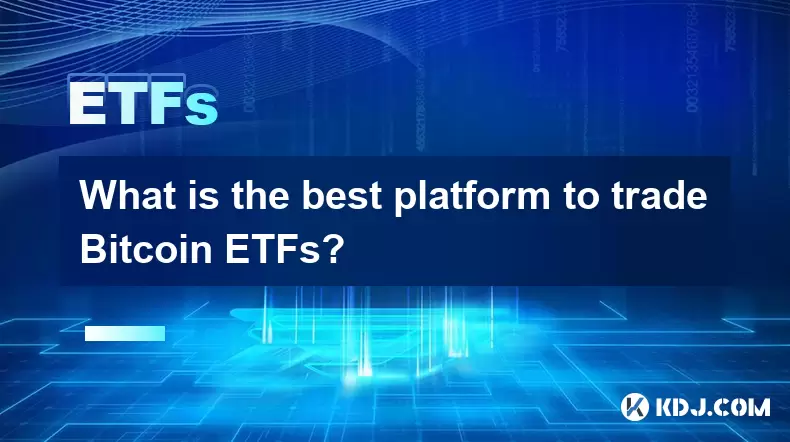
What is the best platform to trade Bitcoin ETFs?
Jul 23,2025 at 04:14am
Understanding Bitcoin ETFs and Their Role in TradingBitcoin Exchange-Traded Funds (ETFs) have gained significant traction among traditional and crypto...
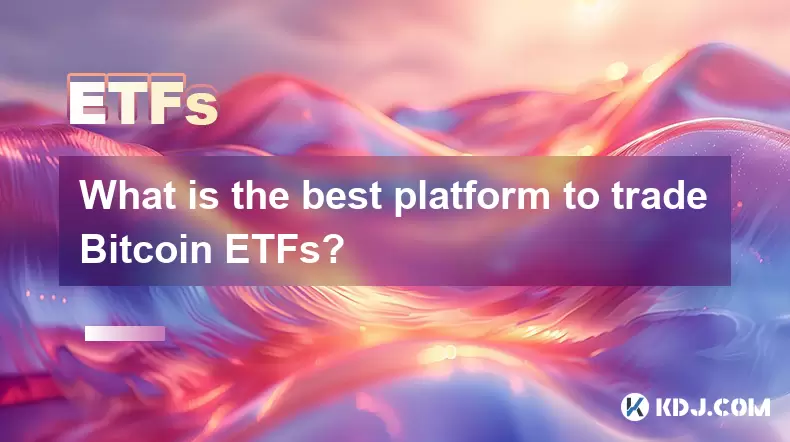
What is the best platform to trade Bitcoin ETFs?
Jul 17,2025 at 03:50pm
Understanding Bitcoin ETFs and Their Role in the MarketBitcoin Exchange-Traded Funds (ETFs) are investment vehicles that track the price of Bitcoin wi...

Will a Bitcoin ETF be available in my 401(k)?
Jul 17,2025 at 10:42pm
What is a Bitcoin ETF?A Bitcoin ETF (Exchange-Traded Fund) is an investment vehicle that tracks the price of Bitcoin without requiring investors to di...
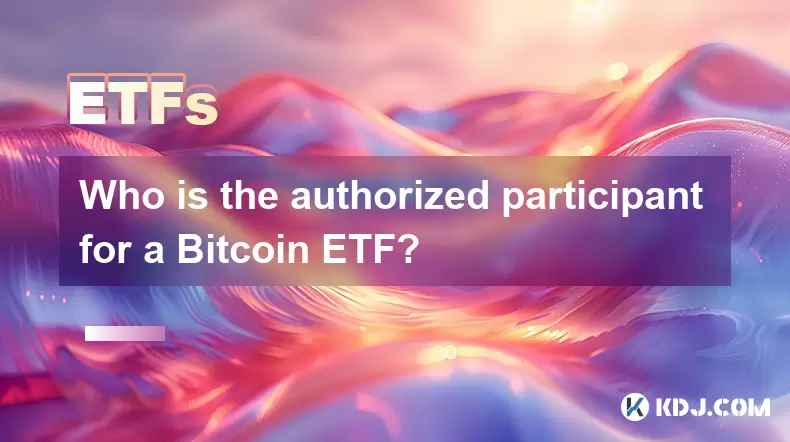
Who is the authorized participant for a Bitcoin ETF?
Jul 18,2025 at 12:42am
Understanding the Role of Authorized Participants in Bitcoin ETFsIn the context of Bitcoin Exchange-Traded Funds (ETFs), an authorized participant (AP...
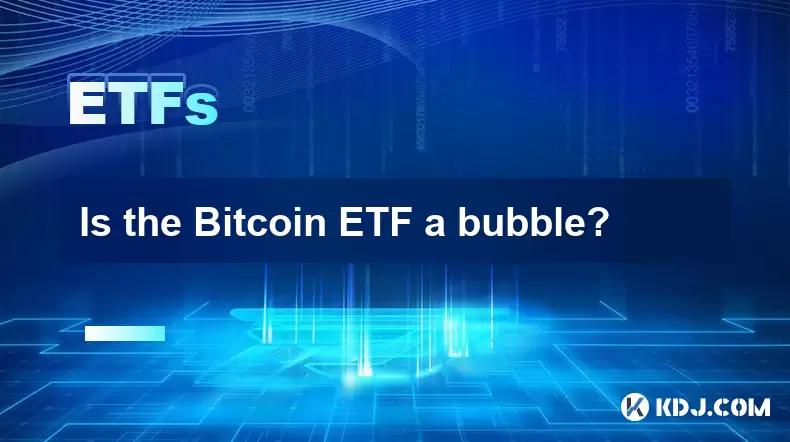
Is the Bitcoin ETF a bubble?
Jul 20,2025 at 06:57am
Understanding the Bitcoin ETF ConceptA Bitcoin Exchange-Traded Fund (ETF) is a financial product that aims to track the price of Bitcoin without requi...
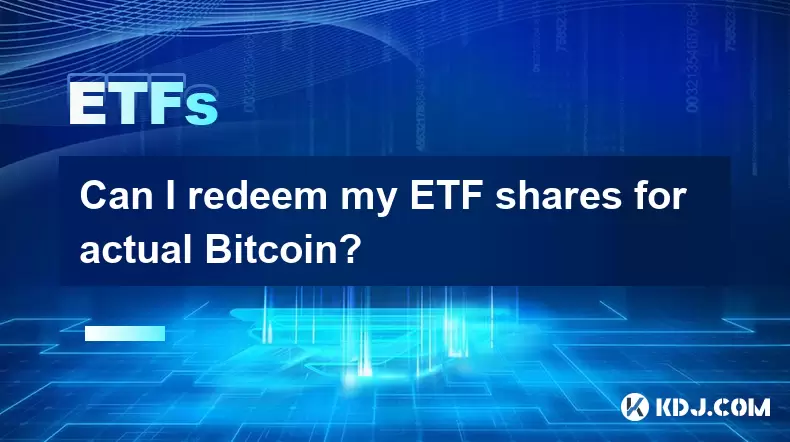
Can I redeem my ETF shares for actual Bitcoin?
Jul 17,2025 at 03:14pm
Understanding ETF Shares and Their Relation to BitcoinExchange-Traded Funds (ETFs) have become a popular investment vehicle for those looking to gain ...

What is the best platform to trade Bitcoin ETFs?
Jul 23,2025 at 04:14am
Understanding Bitcoin ETFs and Their Role in TradingBitcoin Exchange-Traded Funds (ETFs) have gained significant traction among traditional and crypto...

What is the best platform to trade Bitcoin ETFs?
Jul 17,2025 at 03:50pm
Understanding Bitcoin ETFs and Their Role in the MarketBitcoin Exchange-Traded Funds (ETFs) are investment vehicles that track the price of Bitcoin wi...

Will a Bitcoin ETF be available in my 401(k)?
Jul 17,2025 at 10:42pm
What is a Bitcoin ETF?A Bitcoin ETF (Exchange-Traded Fund) is an investment vehicle that tracks the price of Bitcoin without requiring investors to di...

Who is the authorized participant for a Bitcoin ETF?
Jul 18,2025 at 12:42am
Understanding the Role of Authorized Participants in Bitcoin ETFsIn the context of Bitcoin Exchange-Traded Funds (ETFs), an authorized participant (AP...

Is the Bitcoin ETF a bubble?
Jul 20,2025 at 06:57am
Understanding the Bitcoin ETF ConceptA Bitcoin Exchange-Traded Fund (ETF) is a financial product that aims to track the price of Bitcoin without requi...

Can I redeem my ETF shares for actual Bitcoin?
Jul 17,2025 at 03:14pm
Understanding ETF Shares and Their Relation to BitcoinExchange-Traded Funds (ETFs) have become a popular investment vehicle for those looking to gain ...
See all articles





















